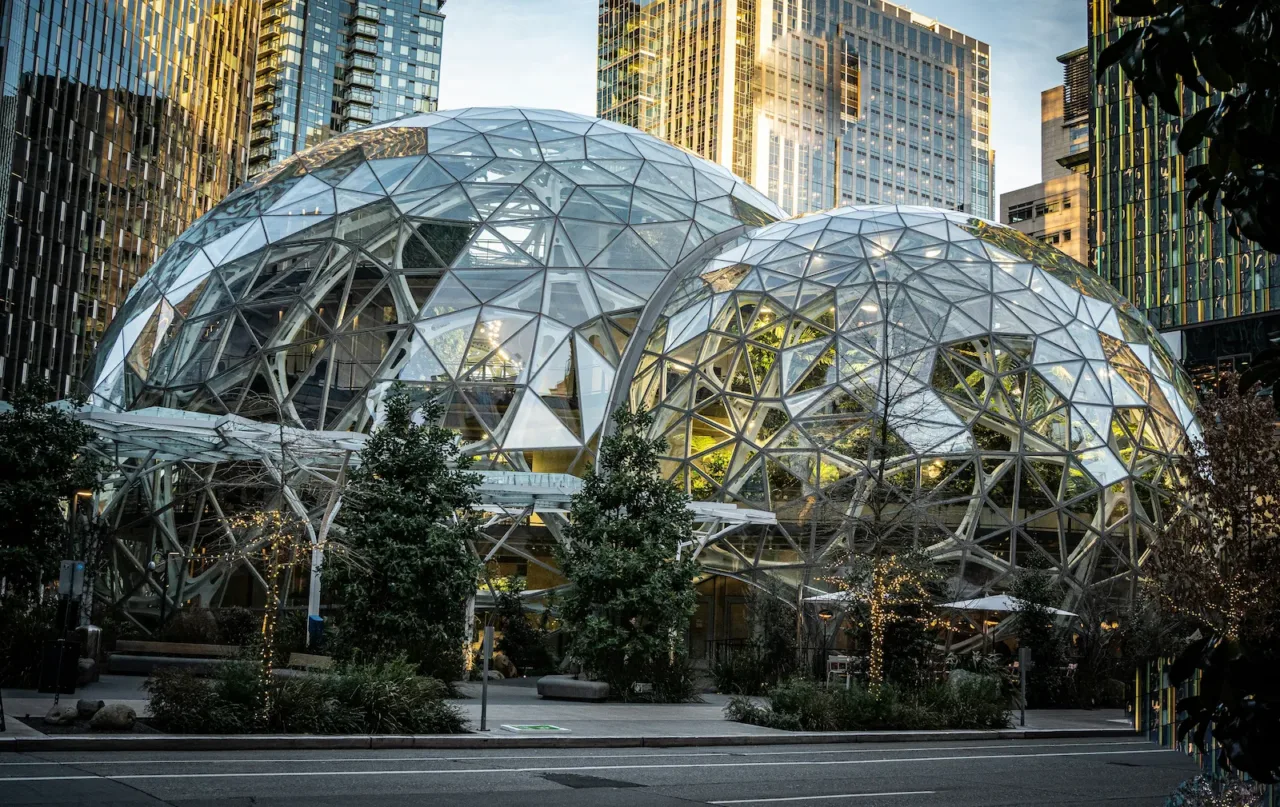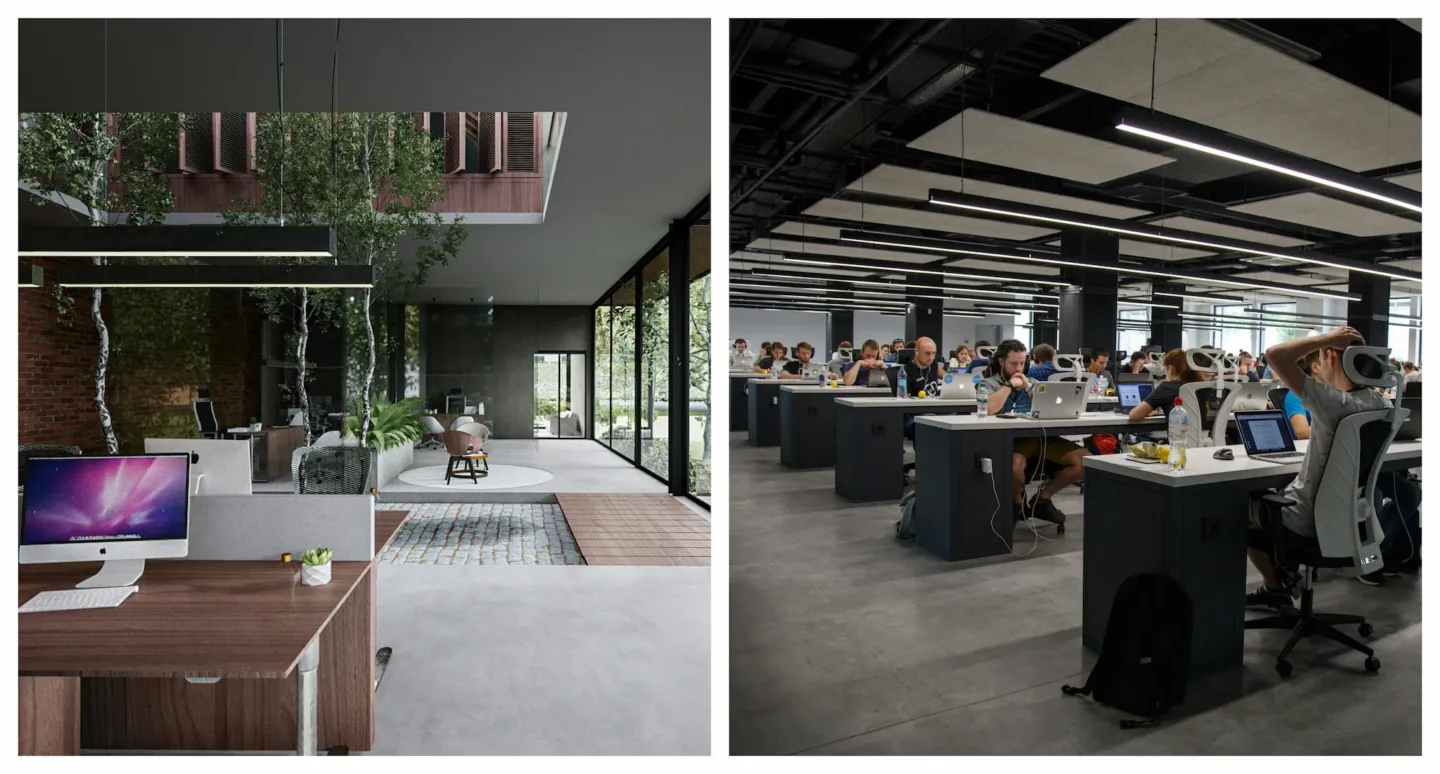Connecting With Nature
Biophilic design goes beyond being a passing trend—it stands as a movement striving to reestablish the bond, between humans and nature. Stemming from the concept of “biophilia,” which denotes an appreciation for life and living systems biophilic design seamlessly incorporates elements into constructed settings offering a range of psychological and emotional advantages.

Inspiration from Nature
The core notion is straightforward; individuals experience an uplift when they are in tune with nature. This principle is now gaining ground in the realms of technology and brand establishment with businesses acknowledging the importance of aesthetics, functionality and user satisfaction.
Tech Adaptation of Biophilic Design
In the realm of technology it’s common to envision environments dominated by metal and glass. However as people focus more on their well being and mental wellness they seek out brands that exude warmth, coziness and hints of nature.
This is where biophilic design steps in. By infusing tech products and branding with features, like plants, ample natural light and organic materials companies can craft an immersive and soothing user experience. This approach not elevates appeal but also fosters wellness while alleviating stress levels—making technology feel more humane and interconnected with its surroundings.
By nurturing a bond, with the world biophilic design serves as a link between the digital realm and the physical environment resulting in increased satisfaction and relaxation for users.
Advantages of Biophilic Design in Branding:
- Enhanced User Experience; Incorporating elements of nature can make technology more inviting and less intimidating.
- Well being; Surrounding oneself with nature can help alleviate stress elevate mood and enhance well being creating a positive experience for users when engaging with your brand.
- Setting Apart from Competition; Amidst a market integrating design can set your brand apart and showcase its innovative and thoughtful approach.
- Embracing Sustainability; Introducing components underscores your commitment to sustainability appealing to conscious consumers.
- Heightened Engagement; Environments featuring elements often boost user interaction and satisfaction levels leading to customer retention rates.
Examples: Successful Integration of Biophilic Design in Tech Brands
Apple Park

Apple Headquarters in Cupertino, CA
Apple Park. Exemplifies the application of design principles. Conceived by renowned architect Norman Foster this architectural marvel boasts spaces, abundant natural light and an impressive array of, over 9,000 trees.
Integrating nature into the workplace not enhances the well being of employees. Also resonates with Apples reputation, for innovation and high quality products.
Amazon Spheres

Amazon Spheres with more than 40,000 plants located in the heart of Seattle, WA
The Amazon Spheres, situated in Seattle house over 40,000 plants and serve as both a workspace and a greenhouse. This natural environment promotes creativity and wellness among staff members showcasing Amazons dedication to innovation and eco friendliness.
Google’s Biophilic Workspaces

Google has been at the forefront of creating workspaces that embrace nature. Their offices are often adorned with plants, natural elements like wood and stone and ample natural light. These design choices not improve the work atmosphere. Also demonstrate Googles emphasis on employee well being and environmental sustainability.
Elevate Your Brand through Design
- Start Small – You don’t need to overhaul your entire brand overnight. Begin with small changes like incorporating plants into your office space or using natural materials in your product packaging.
- Emphasize Natural Light – Natural light is a key component of biophilic design. Whenever possible, maximize the use of natural light in your work environments and in the imagery you use for branding.
- Use Organic Materials – Incorporate materials like wood, stone, and bamboo into your product designs, retail spaces, and branding materials. These elements can create a more tactile and comforting experience for users.
- Create Green Spaces – If you have a physical office or retail space, consider creating green spaces where employees or customers can relax and recharge. This could be as simple as a small indoor garden or as elaborate as a rooftop terrace with plenty of greenery.
- Leverage Technology – Use technology to enhance the natural experience. Apps simulating natural sounds, virtual reality set in nature, and smart lighting mimicking natural patterns can all contribute to a biophilic experience.
The Impact of Remote Work on Office Spaces
The shift towards remote work has transformed how and where we work. With more people working from home the need for office spaces has decreased significantly. A study on the remote workforce reveals that 73% find success in working from home while 76% of employees express a desire to continue remote work. This trend underscores the lasting impact of work, on office environments offering companies an opportunity to reimagine their workspace dynamics.
Businesses can opt for workspaces instead of traditional office setups to cater to both remote and, in person work requirements. This shift not helps cut costs. Also supports employees seeking a better balance between work and personal life.
Furthermore the trend towards work opens up opportunities to incorporate design elements in home offices. Individuals can design their work areas with features like plants and ample sunlight promoting well being and efficiency. As the lines between personal spaces blur, the importance of creating visually appealing environments becomes increasingly crucial. By embracing these evolving trends companies can nurture a workforce that’s versatile and ready to adapt to the changing landscape of work.
The Future of Biophilic Design in Technology
With advancements in technology biophilic design is poised to become more sophisticated. Future developments may include buildings that align with patterns augmented reality experiences bringing nature into urban settings and innovative materials replicating natural textures.
Moreover as environmental awareness grows among individuals there will be a heightened demand for designs that integrate nature seamlessly. Brands that embrace principles will not meet these demands but also lead the way in creating healthier and more immersive experiences, for everyone.
Final Thoughts
Conclusion

Biophillic Design Compared to Traditional Office Workspace
Where would you prefer to spend your workdays?
The inclusion of design, in the development of technology brands is not just a passing fad; it represents a shift towards creating more meaningful and human centric experiences. By incorporating elements technology brands can enhance user satisfaction promote well being and differentiate themselves in a market.
For designers, entrepreneurs, business owners and marketers alike now is the time to explore how biophilic design can be integrated into your brand identity. Whether, through adjustments or major transformations the advantages of aligning your brand with nature are clear.
If you’re curious to learn more I’ve written an analysis detailing how we infused elements of nature to shape and inspire the stages of Xerofit’s brand development. You can read the post here.